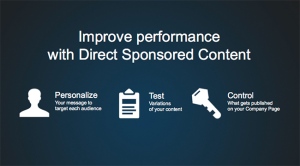Due to recent developments related to COVID-19, many companies that typically host in-person events are shifting to virtual events. For some, this is an entirely new experience that requires different preparations, skillsets, and marketing tactics.
Though it’s been a while since I worked in the virtual event space at The Economist, I put together some tips on how to run virtual events for those who are new or need a refresher.
Do you have any virtual event tips to share? Please add them in the comments!
Tips for Engaging Attendees
Leading up to Virtual Event
It is generally more challenging to get attendees excited about an event when it is 100% virtual. Without travel plans or in-person networking events to look forward to, attendees may feel less enthusiastic about attending.
As virtual event organizers, it’s our job to keep delegates excited. It’s important to provide relevant information leading up to the event to keep them engaged – via email, SMS, social media, and/or direct mail. Schedule a consistent calendar of communications every week to maintain momentum and excitement leading up to the event. A few ideas:
- Send recorded webcam messages from speakers or presenters, reminding attendees that the event is coming up & sharing a preview of what they will be presenting.
- Schedule a drip email campaign releasing the event schedule over the course of a few weeks or months, announcing new speakers one at a time.
- Ask speakers to participate in promoting the event. Put together promotion packets with resources and tips for them to promote the event on their own social channels and to their colleagues.
Attendees might also be uncertain about what to expect from a virtual event. Clear communication about when, why, and how to attend are especially important. Information should include:
- Logistics of the event, including how to log in, when and where events are happening, and who to contact for support.
- Remind attendees about the value of attending – the value proposition may be somewhat different than an in-person event.
During Virtual Event
Attendees have more distractions at a virtual event than they would normally at an in-person event – from checking emails and social media, to watching movies and TV, there are lots of activities competing for their attention at home. It’s important to plan engagement tactics to keep attendees’ attention and incentivize them to participate during the event. Some ideas:
- Keep individual sessions short (about 30 minutes) and don’t plan to have continuous programming for more than a few hours.
- Organize chat groups for attendees to engage in between speaker sessions. Provide discussion questions to encourage engagement.
- Set up video networking sessions and bring 5-10 people together for introductions and discussion. The groups could be random or organized by interest, job title, etc. Or, set up 1:1 “speed-dating” style networking sessions.
- Announce a sweepstakes for everyone who attends a certain number of sessions or specific presentations, including them in a prize draw.
- Plan special announcements for a specific time that the attendees will only be able to hear about if they attend, for example: awards, prize draws, industry announcements, exclusive offers, etc.
- Reward attendees with valuable information they can only get if they attend, such as whitepapers, research, PDF guides or cheat sheets, session transcripts, or other valuable information that is only available for those who show up.
Tips for Engaging Speakers/Presenters
Leading up to Virtual Event
Keep in mind your event may be the first time some of your speakers are presenting at a virtual event. Therefore, they will need special guidance and support to prepare, including:
- What to wear and where to host the session
- What technical equipment and software is required
- How to log in, start/end the session, record the session, etc.
Schedule 1:1 prep sessions with a producer and each speaker, to talk them through what to expect (especially for live sessions) and answer any questions. If the speaker is presenting live from home, be sure to test their webcam and mic.
During Virtual Event
- Plan to have support specialists available for speakers to address any issues that come up (again, especially for live sessions).
- Provide clear communication about how and where speakers can get support and information. For example, set up a “speakers’ hub” chat room or support hotline.
Tips for Programming and Production
Production
Technical Support & Back-up Planning
- Plan to have technical support specialists available for both speakers and delegates to respond in real-time.
- Communicate clearly about where people can go to get support.
- Prepare “worst-case scenario” back up plans. What if the webcam isn’t working during a live session? What if the virtual event website goes down? These challenges are unlikely but can be dealt with more easily if you have prepared for them.
Programming
Choose the Right Speakers
- Not every speaker is well-suited for virtual events. It takes extra charisma and energy to engage people online, so consider this when selecting your speakers.
- You may benefit from selecting speakers who have a digital brand or are active on social media. They can leverage their own following to encourage attendance leading up to the event.
- Put together promotion packets with tips and resources to help speakers spread the word about their presentations. It could include: social media copy, graphics, copy blurbs for newsletters and websites
Dynamic Programming and Tools to Promote Engagement
- It’s important to have a mix of formats during the event to maintain engagement, rather than one long webinar or block of video sessions. For example, the program might include a one-hour block of presentations followed by an open chat/networking session, followed by a live Q&A.
- Consider various tools to help attendees stay engaged during each session, including live Q&A, polls, surveys, white-boarding, infographics, social integration, gamification, etc.
Scheduling for Time Zones
- Consider where your attendees will be joining from. It’s important to schedule relevant sessions at a convenient time, and make a recorded version available for those who cannot attend in real time.
- People who are attending events online may have shorter attention spans due to all of the distractions they have at home. It’s important to schedule frequent breaks, optional sessions, and opportunities for attendees to come and go according to their schedules.
- Consider extending the duration of the event. If the event would be one day in-person, consider extending it to two days of virtual programming, enabling more people to attend.
Lastly, remember you don’t have to do this alone! There are plenty of companies and experts who specialize in virtual events. Here’s a list of virtual event companies and services. If you have others to include, please drop them in the comments:
Virtual Event Companies & Service Providers
- Vimeo: Event Live Streaming
- Onstream Media
- Virtual Venues
- INXPO
- VFairs
- BeaconLive
- PGi
- 6connex
- Workcast
- On24
- Vito
And check out these free virtual event tools from HubSpot.




